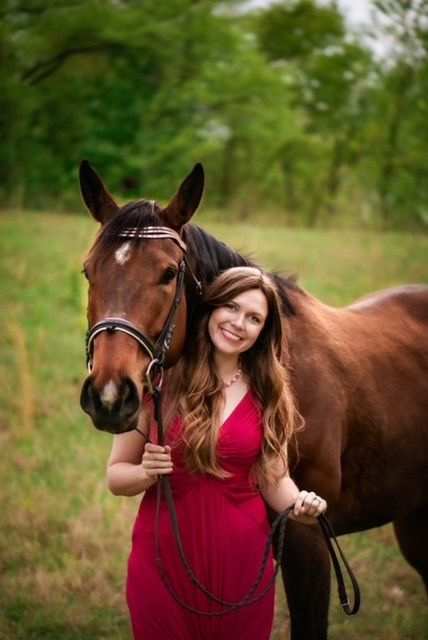Why Every Horse Rider Should Wear a Helmet


Horseback riding involves some risk, which can be alleviated to some extent by wearing a riding helmet.
Historically, riding helmets were predominantly seen only in English disciplines. However, they are becoming more common in the Western world, from trails to barrel racing.
Did you know that equestrian-related injuries account for 70,000 emergency room visits yearly, with 12,000 head injuries?
Another startling statistic: Falling from only 2 feet high can cause permanent brain damage, according to Troxel Helmets’ website.
An Ohio-based equestrian shared with Valley Vet Supply why she buckles on her helmet before every ride.
“One day, we were riding around the outdoor arena, and out of nowhere, my horse Luna tripped and then tripped a second time,” Sonja Arnold, equestrian, said. “I prepared myself mentally for the inevitable fall that was coming. As I felt her body fall out from underneath me, I hit the ground face down and the next thing I knew, she was rolling over top of me. I will never be able to forget the sound of my helmet crunching as she continued to roll over me and then away from me.”
“I am so lucky that both Luna and I walked away from our worst crash, which was unscathed. In those heart-stopping moments, as she tripped, fell and my helmet crunched under her body weight, I realized just how appreciative I was of all the trainers and people along my way who preached to me that I must always wear a helmet,” Arnold said.
Choosing a Riding Helmet
Riders can increase their safety by wearing an ASTM/SEI-approved helmet. ASTI is an acronym for the American Society for Testing and Materials, an organization consisting of dedicated doctors, engineers and physicists. SEI stands for Safety Equipment Institute, where helmets are tested in a lab setting to ensure they meet ASTM standards. To identify whether your helmet meets these safety standards, see if an ASTM/SEI seal is visible within the helmet.
The University of Connecticut Department of Animal Science produced the report “Riding Helmet Safety.” It addresses helmet fitting and states, “When you wiggle your helmet, it should move your eyebrows — this is one way to know that it fits tight enough. The helmet should stay comfortably on your head when harnessed without moving around on your head no matter what you're doing. Bend over at the waist and shake your head. A correctly fitted helmet will not move.”
You will be the best judge of whether a helmet is too small. If your helmet leaves a line on your forehead when you take it off or gives you a headache when worn, chances are it’s too small and you need the next size. With your head size measurements, you can identify the appropriate riding hat size from a wide selection of helmets.
Fashion Meets Function
Whether you ride English or Western, finding a helmet that suits your style and budget is easy. There's something for everyone — from glamorous designs with bling to rugged leather looks. Helmets with wider brims shield your eyes from the sun, while vented options provide a refreshing breeze. For those who can't part with their cowboy hat, there’s a cowboy hat brim accessory you can attach to your helmet to complete the look and provide sun protection.
With a wide range of riding helmets, you can ride with peace of mind, knowing you're protected against the unexpected. In the unpredictable world of horses, it's always best to be prepared.
Facts About Concussions
The U.S. Equestrian Federation has developed resources to help educate equine enthusiasts about concussions.
Signs of concussions can include:
- Shock and confusion.
- Unsure of whereabouts.
- Uncoordinated movement.
- Delayed response.
- Loss of consciousness.
- Behavioral changes.
- Lack of recollection.
Common symptoms reported:
- Nausea and vomiting.
- Lack of balance.
- Double or blurred vision.
- Sensitivity to light and noise.
- Sluggishness and confusion.
- Feeling “off.”
- Headache or head pressure.
Tags:Horse Sense

Acreage Life is part of the Catalyst Communications Network publication family.
















